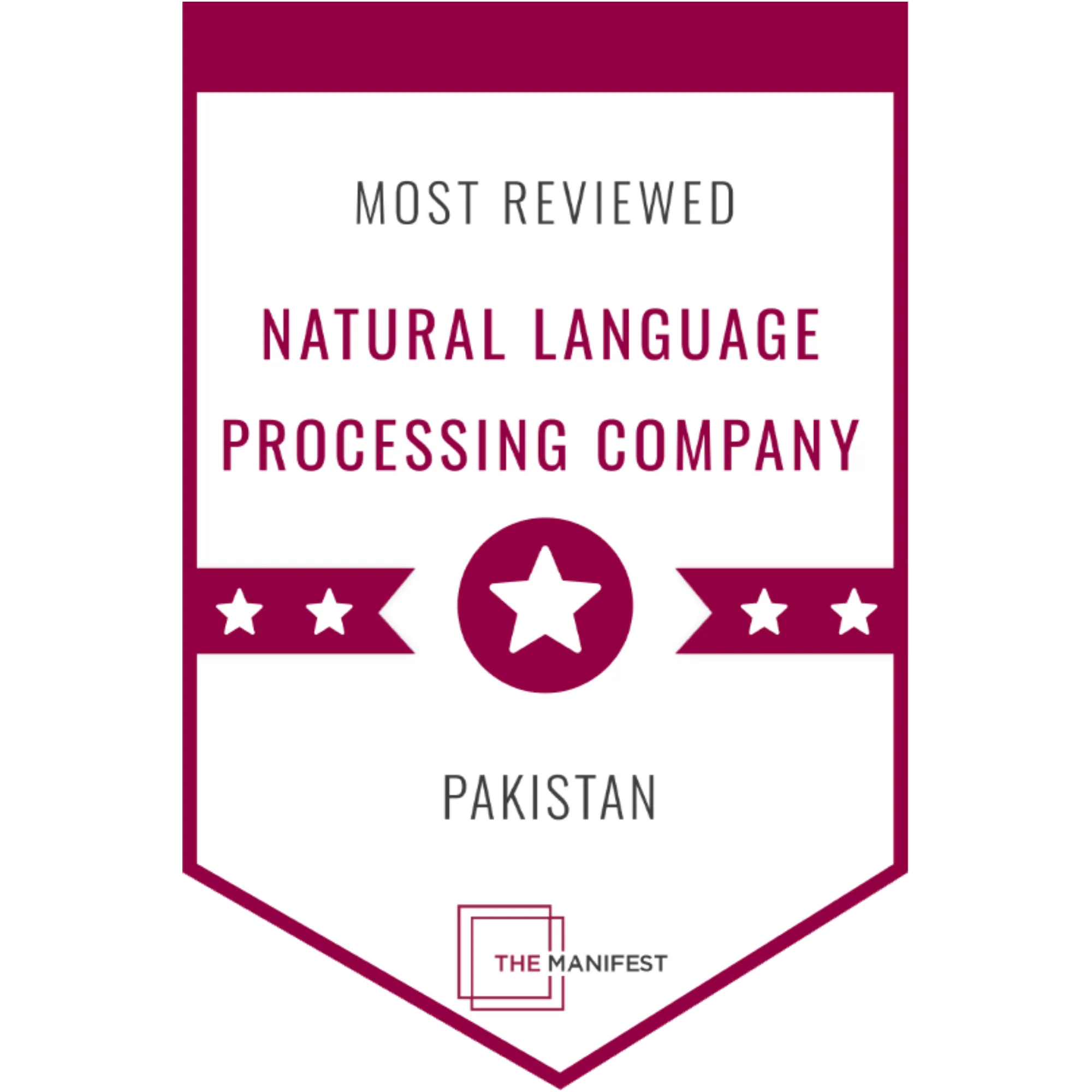How Does AI Reduce Human Error: Some Significant Ways to Become Efficient

Contents
Introduction:
In today’s fast-paced and highly competitive business landscape, efficiency is key to success. Every organization strives to minimize human errors and optimize processes to maximize productivity and profitability. Fortunately, advancements in technology, particularly in the field of Artificial Intelligence (AI), have opened up new possibilities for unlocking efficiency in various industries.
One such development is the emergence of Generative AI development, a subset of AI that focuses on automated problem-solving and decision-making. In this article, we will explore what human errors are, how can AI maximuze human error prevention, and some human errors examples. By the end, we’re gonna answer one question: How does AI reduce human error?
Whether you are an AI enthusiast or a business owner looking to integrate AI into your operations, this article will provide valuable insights and common human errors examples into the potential of AI development and Generative AI integration. So, let’s dive in and discover the power of AI in unlocking efficiency!
What are Human Errors?
Human errors are unintentional mistakes made by individuals during the execution of a task or the decision-making process. These errors can result from various factors, including lapses in attention, lack of knowledge or training, fatigue, and even the inherent limitations of human cognition.
Understanding human errors is crucial in various fields, as it allows for the development of strategies to mitigate their impact and prevent their recurrence. Whether in critical industries like healthcare and aviation or in everyday tasks, there are several human errors examples that we see and hear in our daily lived. Human error prevention serves as a foundation for fostering a culture of continuous improvement and enhancing overall efficiency.
Seamless Collaboration | Cost-Efficient Solutions | Faster Time-to-Market

Human Errors Examples:
Human errors manifest in diverse forms across different contexts. Below are some human errors examples:
- In data entry, typographical mistakes or transposing numbers can lead to inaccuracies.
- In healthcare, administering the wrong medication due to misinterpretation of prescriptions represents a potentially severe human error.
- In manufacturing, overlooking a step in the assembly process can result in defective products.
- Cognitive biases also contribute to errors, such as confirmation bias influencing decision-making.
These human errors examples underscore the importance of identifying, understanding, and addressing human errors across various industries. By learning from these instances, organizations can implement measures and technologies, including artificial intelligence, to minimize the occurrence and ensure human error prevention. Every industry must figure out how does AI reduce human errors, and how can they increase human error prevention in their business.
Impact of Human Errors on Customer Experience:
Here are some human errors examples that may help you understand how does AI reduce human error:
In industries where customer experience is paramount, human errors can have a profound impact. From inaccurate order processing to communication breakdowns, these errors can lead to customer frustration and dissatisfaction.
AI technologies play a crucial role in human error prevention by ensuring accurate order processing, personalizing customer interactions, and efficiently resolving issues.
The result is an elevated customer experience, with fewer instances of frustration or dissatisfaction due to errors in service delivery. By leveraging AI to enhance customer interactions, businesses not only improve customer satisfaction but also safeguard their reputation and brand loyalty.
Human errors and their impact on efficiency:
Human errors can have a significant impact on the efficiency of any organization. Mistakes made by employees can lead to decreased productivity, increased costs, and even potential safety hazards.
These errors can stem from a variety of factors, including tiredness, distraction, or inadequate training. Regardless of the cause, the consequences can be detrimental to the overall success of the business.
Human Error Prevention with AI
One of the major advantages of AI is its ability to minimize human errors. By automating certain processes and decision-making tasks, AI can ensure consistency and accuracy in operations.
It removes the element of human fallibility and reduces the likelihood of mistakes occurring. This not only boosts efficiency but also enhances the quality of work being produced.

How does AI Reduce Human Error?
AI’s ability to process vast amounts of data quickly and accurately allows it to identify patterns, detect anomalies, and make predictions with a high level of precision. By doing so, AI can provide real-time feedback, alert humans to potential errors, and even make autonomous corrections when necessary.
For instance, in the healthcare industry, AI-powered systems can analyze medical data and assist doctors in diagnosing diseases more accurately. This reduces the likelihood of misdiagnosis, which can have detrimental consequences for patients’ health.
Similarly, in the manufacturing sector, AI-based quality control systems can detect faulty products early on, preventing flawed items from reaching consumers. Here are a few answers to how does AI reduce human error:
Automating routine tasks with AI:
If someone asks “How does AI Reduce human error? Tell them this:
One of the most significant ways AI can minimize human errors is by automating routine tasks. Many industries are burdened with repetitive processes that are prone to human error due to boredom, fatigue, or simply oversight. By leveraging AI technology, these routine tasks can be effectively automated, reducing the chances of mistakes and improving overall efficiency.
Automating Customer Service:
For example, in the banking industry, AI-powered chatbots can handle customer inquiries and provide accurate responses instantly. This increases the possibility of human error prevention in providing incorrect information or not responding promptly.
Improvising Traffic Management with AI:
Additionally, in the transportation sector, self-driving cars can navigate through traffic and make decisions based on real-time data, maximizing human error prevention in accidents caused by distracted driving.
Hence, automating routine tasks not only reduces the potential for errors, but also frees up human resources to focus on more complex and strategic aspects of their work.
Enhancing decision-making with AI algorithms:
One of the key answers to how does AI reduce human errors is by enhancing decision-making processes with the help of AI algorithms. Decision-making is essential in all industries, and even the smallest errors can have significant consequences.
AI algorithms can analyze vast amounts of data, identify patterns, and make data-driven recommendations or predictions. This reduces the reliance on human judgement, which can be subjective and prone to biases.
By incorporating AI algorithms into decision-making processes, industries can leverage the power of data to make informed choices while minimizing the risks associated with human error.
Streamlining processes with AI-powered workflow systems:
AI-powered workflow systems offer a tremendous advantage in minimizing human errors by streamlining processes. These systems harness the power of AI algorithms to automate and optimize workflows, eliminating the need for manual intervention and reducing the likelihood of mistakes.
By automating repetitive and mundane tasks, AI-powered workflow systems can free up human resources to focus on more complex and critical activities, allowing them to perform at their highest potential.
These systems can also identify bottlenecks and inefficiencies in workflows, suggesting improvements and optimizing resource allocation. Consequently, the likelihood of errors due to human oversight or fatigue is greatly reduced.
In industries like manufacturing, where precision and efficiency are paramount, AI-powered workflow systems can transform operations. By continuously monitoring and analyzing data, these systems can proactively detect anomalies and abnormalities, preventing errors before they occur. This not only saves time and resources but also enhances overall productivity.
Training employees with AI-driven simulations and virtual assistants:
Human error prevention with AI is one of the most efficent advancements.
One of the most significant benefits of AI technology is its ability to train employees through simulations and virtual assistants. Traditional training methods often require costly resources, such as hiring external trainers or conducting extensive workshops. However, AI-driven simulations provide a cost-effective and efficient way to train employees on complex tasks and processes.
Simulations can recreate real-life scenarios, allowing employees to practice and learn without the fear of making mistakes that may have serious consequences. Virtual assistants equipped with AI algorithms can provide prompt and personalized guidance, making the learning process more engaging and effective.
By leveraging AI technology for training, companies can ensure that employees have the necessary skills and knowledge to perform tasks accurately and efficiently, thereby reducing the chances of human errors. This approach not only saves time and resources but also enhances employee engagement, and also increases human error prevention and productivity.
Implementing predictive analytics to identify and enhance human error prevention:
Implementing predictive analytics is another way AI can minimize human errors in the workplace. By analyzing vast amounts of data, AI algorithms can identify patterns and trends that humans may not be able to detect on their own. This enables organizations to proactively identify potential errors and take appropriate preventive measures.
For example, in manufacturing industries, AI-powered systems can analyze production data to predict equipment failure or quality issues before they occur. This allows businesses to schedule maintenance or make adjustments in real-time, minimizing downtime and improving overall efficiency.
In healthcare, AI can be used to analyze patient data and identify potential risks or complications, helping healthcare providers make informed decisions and provide early interventions. By leveraging the power of predictive analytics, organizations can significantly reduce the occurrence of errors and improve overall operational performance.
Ensuring data integrity with AI-driven auditing mechanisms:
In addition to predictive analytics, AI can also play a crucial role in ensuring data integrity within organizations through the implementation of AI-driven auditing mechanisms. Human errors in data entry or processing can lead to significant problems, such as incorrect financial statements or compromised customer data.
With AI-powered auditing systems, organizations can automate the detection and correction of data inconsistencies, anomalies, and inaccuracies. These systems can validate data against predefined rules and algorithms, flagging any discrepancies for further investigation. This not only minimizes the risk of human errors but also saves time and resources that would otherwise be spent on manual data auditing processes.
Moreover, AI-driven auditing mechanisms can continuously monitor data integrity, providing real-time alerts and notifications in case of any deviations. By ensuring the accuracy and reliability of data, organizations can make confident decisions based on trustworthy information, further reducing the likelihood of errors and enhancing overall operational efficiency
Benefit of AI Integration in Software Development:
AI has brought about a paradigm shift in the landscape of software development. Its influence extends across various stages of the development lifecycle, from coding to testing and optimization.
AI-driven tools assist developers in writing more robust code, identifying and fixing bugs, and optimizing performance. This not only accelerates the development process but also reduces the likelihood of errors in software applications.
Moreover, AI plays a crucial role in automating routine and time-consuming tasks, allowing developers to focus on more complex and creative aspects of their work. The result is a more efficient and error-resistant AI software development process, enhancing the reliability and stability of the digital products that underpin today’s technological landscape.
How does AI enhance Data Analytics?
The AI Integration has ushered in a transformative era in data analytics. AI’s impact on data analytics is profound, as it enables organizations to process vast datasets at unprecedented speeds and uncover intricate patterns and insights.
Traditional data analysis methods often fall short when confronted with the sheer volume and complexity of modern data. AI algorithms, on the other hand, excel in handling this data deluge, ensuring more accurate and nuanced analyses.
By leveraging AI in data analytics, businesses gain a competitive edge through informed decision-making, reduced errors associated with human interpretation, and a deeper understanding of their operations and market dynamics.
The future of AI:
As we wrap up this blog on how AI can minimize human errors, let’s take a moment to consider the future of AI and its potential impact on efficiency. The advancements in AI technology are rapidly evolving, opening up new possibilities for organizations across various industries.
In the coming years, we can expect AI to become even more intelligent and capable of handling complex tasks. With the integration of machine learning algorithms and natural language processing (NLP), AI systems will be able to analyze and understand vast amounts of data with minimal human intervention. This will undoubtedly revolutionize the way organizations operate, allowing them to unlock higher levels of efficiency and accuracy.
Furthermore, as AI continues to mature, we can anticipate the development of AI systems that can not only minimize human errors but also proactively predict and prevent them. By harnessing the power of AI, organizations will be able to achieve unprecedented levels of productivity, reliability, and cost-effectiveness.
AI is a game-changer when it comes to minimizing human errors and unlocking efficiency. Incorporating AI-driven mechanisms such as predictive analytics, automated auditing systems, and intelligent workflow optimizations can revolutionize the way organizations operate, ensuring data accuracy, reducing risks, and enhancing overall operational efficiency.
AI’s Potential to Maximize Human Error Prevention:
How does AI reduce human error? As we have discussed in the previous sections, AI has already shown great potential in minimizing human errors and enhancing efficiency. However, its capabilities are only set to improve in the coming years.
One area where AI has the potential to further minimize human errors is in decision-making processes. By leveraging AI and machine learning algorithms and analyzing vast amounts of data, AI systems can provide more accurate and unbiased insights to guide decision-making. This can help organizations avoid costly mistakes and make more informed choices.
Error Detection:
Additionally, AI can play a crucial role in error detection and prevention. With advanced pattern recognition algorithms, AI systems can identify anomalies or deviations from expected outcomes, alerting human operators before any major errors occur. This proactive approach can significantly reduce the likelihood of errors and ensure smoother operations.
Furthermore, as AI continues to evolve, we can anticipate the development of more sophisticated AI systems that can learn from past errors and continuously improve their performance. By analyzing error data, AI can identify root causes and suggest process improvements to similar human error prevention from happening in the future.
Capabilities of AI Technologies:
How does AI reduce human error? This question is simple, but holds a greater significance. The potential of AI to minimize human errors is vast and ever-expanding. By embracing AI technologies and leveraging their capabilities, organizations can not only unlock higher levels of efficiency but also improve decision-making processes and enhance overall operational performance. The continuous advancements in AI will undoubtedly revolutionize the way we work and drive success in the digital age.

Conclusion:
In conclusion, AI holds tremendous potential in minimizing human errors and revolutionizing various aspects of our lives. From decision-making processes to error detection and prevention, AI’s capabilities are set to improve and make a significant impact on efficiency.
By leveraging machine learning algorithms and analyzing vast amounts of data, AI systems can provide more accurate insights and guide decision-making, preventing costly mistakes and enabling more informed choices. Additionally, with advanced pattern recognition algorithms, AI can proactively identify anomalies and deviations, reducing the likelihood of errors and ensuring smooth operations.
As AI continues to evolve, we can expect even more sophisticated systems that learn from past errors and continuously improve their performance. By analyzing error data, AI can identify root causes and suggest process improvements, preventing similar errors in the future.
Embracing AI technologies and leveraging their capabilities can unlock higher levels of efficiency, improve decision-making processes, and enhance overall operational performance. In the digital age, AI will play a crucial role in driving success and helping us achieve our goals more effectively

























